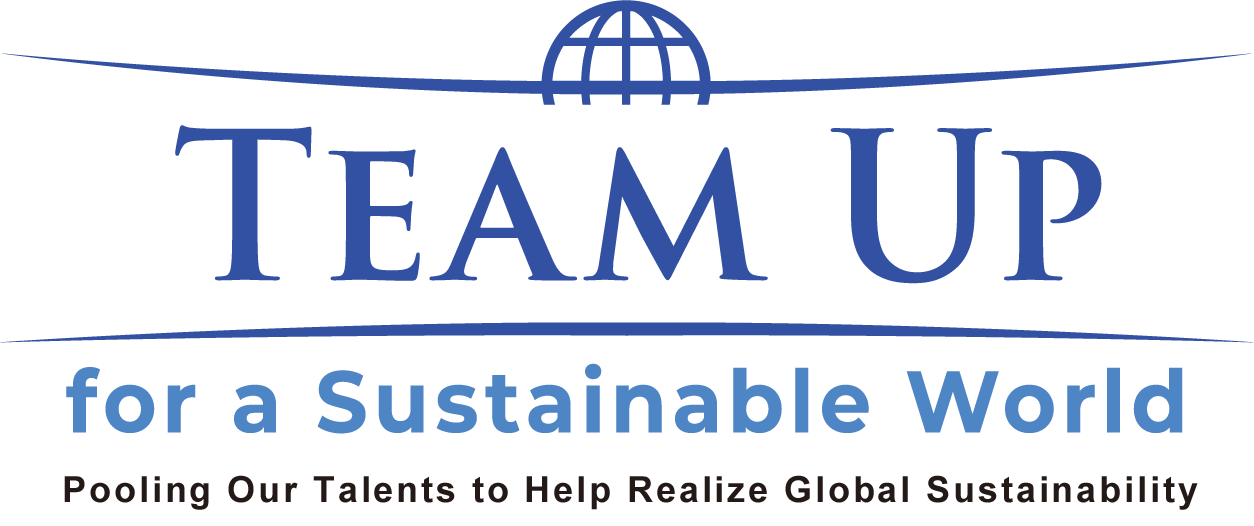TEAM UP for a Sustainable World:Offshore Wind Farm Project Commences off Coast of Famous Fishing Community
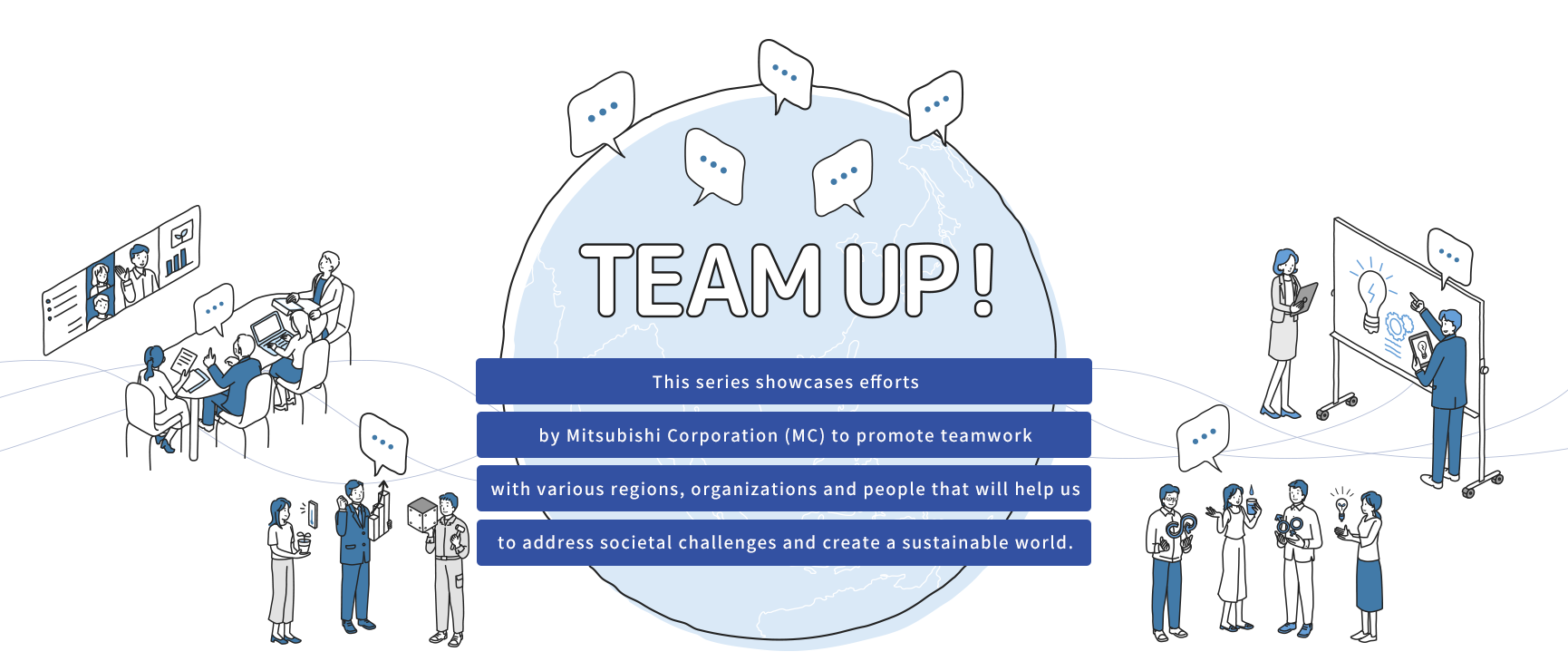
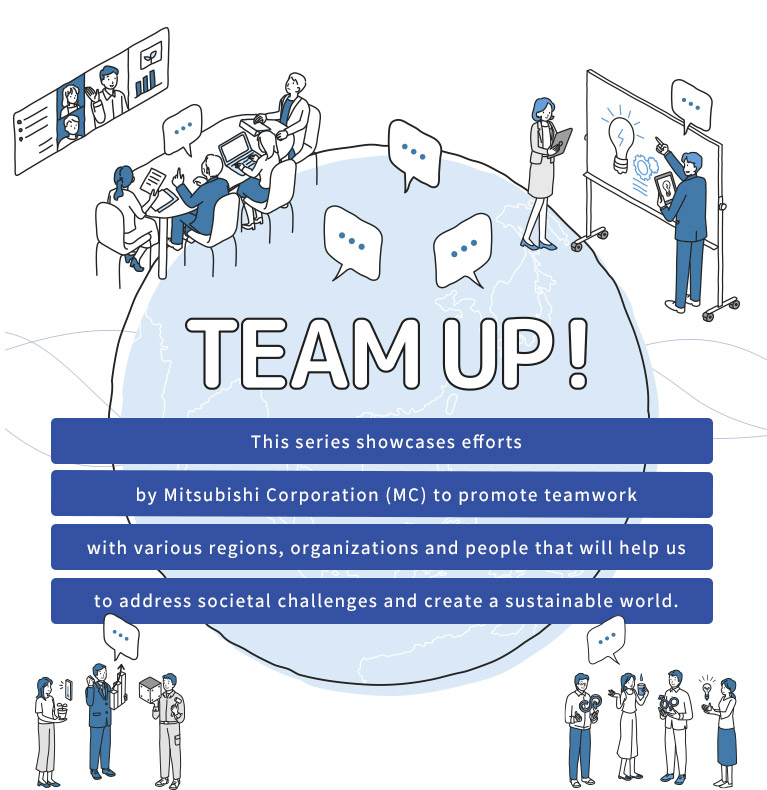
Offshore Wind Farm Project Commences off
Coast of Famous Fishing Community
TEAM UP for a Sustainable World
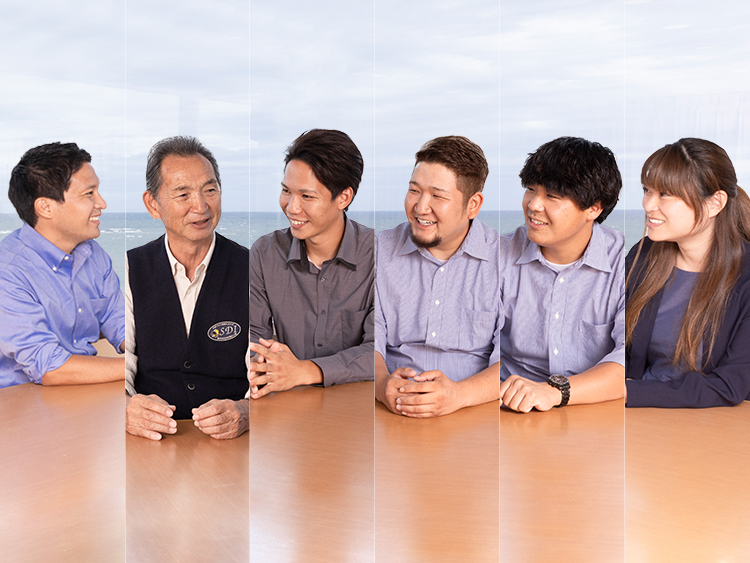
Offshore Wind Farm Project (1)
Choshi Port in Chiba's Choshi City has recorded Japan's highest annual catch for 11 years in a row. The city is known for its fishing industry, but recently a new wind power project off its coast has captured the public's attention. The global push to decarbonize has provided impetus to the development of offshore wind farms, and the plan in Choshi is to launch operations of a 31 large-scale turbine farm in 2028. Wind is appealing due to its potential as a renewable energy, but the installation of these farms can also help to invigorate fishing grounds. This is the first of our two-part interview with several of the project's interested parties, including young local fishermen, marine-survey specialists, and employees from the MC Group. They help us to understand why Choshi City is such a promising location for a wind farm and what the future has in store for the region.
- Roundtable Participants
-
Masanobu Shibuya (Shibuya Diving Industry Representative and Director, Marine Renewable Energy and Fisheries)
Masayoshi Tamura (Youth Group, Togawa Port Branch, Choshi City Fishery Cooperative)
Yasuyuki Kamosaku (Youth Group, Togawa Port Branch, Choshi City Fishery Cooperative)
Hiroya Kase (Youth Group, Togawa Port Branch, Choshi City Fishery Cooperative)
Ryo Hanazaki (Mitsubishi Corporation Offshore Wind Ltd.)
Kaori Kuroda (Mitsubishi Corporation Offshore Wind Ltd.) - Interviewer
- Kazuhiro Sekine(Globe+ Editor in Chief)
Leading the Way in Japan's Fishing Industry
What Does Sustainable Fishing Mean for Choshi City?
—— Today, we have with us some young members of Choshi City's Fishery Cooperative. Welcome. All of you are experts on kinmendai (golden eye snapper), which Choshi is famous for. Please tell us what attracted you to a career in fishing and what your day-to-day work is like.
Tamura We were all born and raised in Choshi. Our fathers and grandfathers were all fishermen, so we've just followed in their footsteps. It's very rewarding to know that our region has recorded the largest haul in Japan for 11 straight years and that tourists love the local seafood. Those things are great sources of pride for Choshi fishermen. We have to get up at sunrise to fish for kinmendai. We use a line-catching method called tate-nawa (lit. "verticle long line") so that we can reel in the fish one by one without damaging them. A fish-market auction is held on the morning of each catch, so the fish sold are exceptionally fresh and of the highest quality. The port of Choshi is where the warm Kuroshio and cool Oyashio currents meet, so the waters hold an abundance of plankton and small fish. This ensures that the kinmedai are fat and succulent all year round. It's what makes catches from our port so special. The fish taste delicious no matter how they are prepared, whether boiled or served as sashimi or tempura.
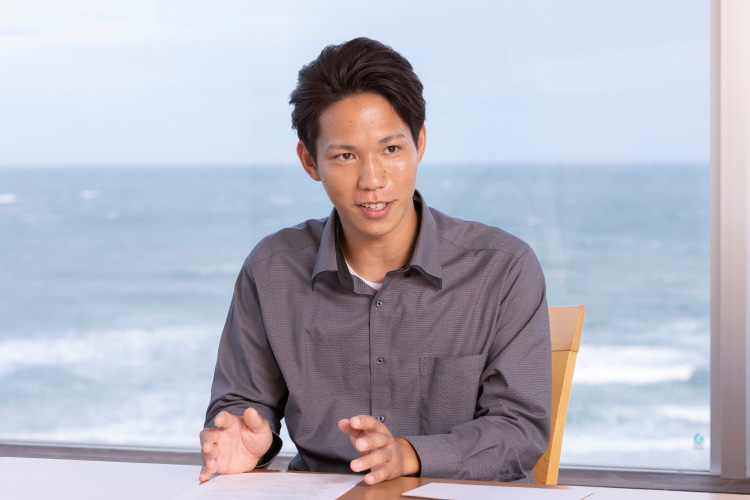
Kase Choshi has its own, rather strict rules on fishing kinmendai, in order to preserve the ocean's natural stocks. For example, we have to complete our fishing within three hours of sunrise and we can attach no more than 60 hooks to each line.
Kamosaku Also, we have to stop fishing if the current is too fast. On days like that, we'll depart from the port in the middle of the night and sail for three hours before we reach the fishing grounds, only to have to turn back without catching anything. Because everyone is abiding by the "no overcatching" rule, we're able to maintain healthy annual yields of kinmendai.
Aging Fishermen and Depleting Stocks Big Problems for Japan
—— What problems are Choshi's fishermen facing these days? What concerns you about the industry, if anything?
Kase The aging of our fishermen and lack of successors are serious issues. For example, we are the only three in the 20-30 age range who are still sailing small, family-operated vessels that fish for kindmendai and other species. There are a lot of fishermen who are still fishing even though they're now in their 80s, my grandfather being one of them. I'm not sure what we're going to do when the older generation finally retires. It's definitely a worry.
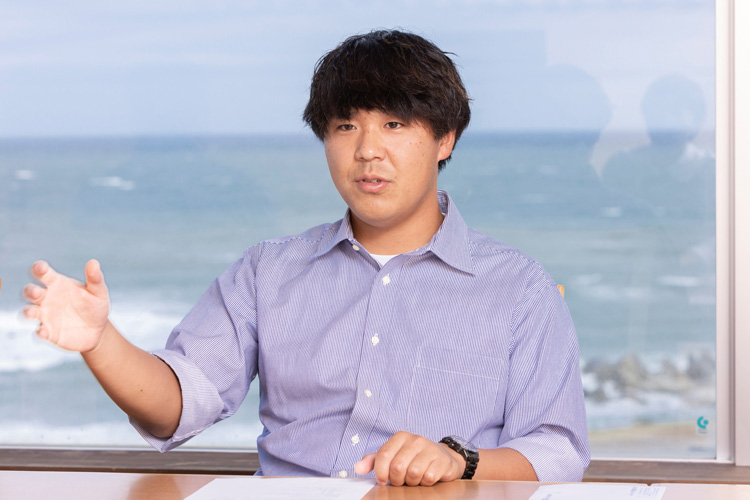
Tamura We couldn't fish for kinmendai for two to three years after the Great East Japan Earthquake. I was able to keep our vessel on the water, but the shock was something I'll never forget. Since the disaster, I've always been conscious of the possibility that the fish may disappear. A few years ago, the Kuroshio current started to meander, and from what I understand, this has caused the kinmendai to disappear from some of their traditional fishing grounds. We can't see our ocean's fish, so it's hard to know just how many are left, but things like global warming and natural disasters could one day wipe them out, just like that. It's always a concern.
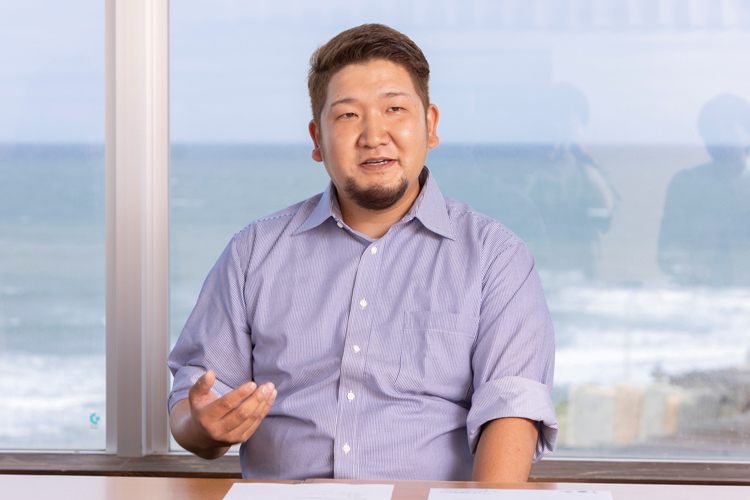
Kamosaku We've been fishing kinmendai since my father took over, so it's basically been my livelihood. I do worry about it disappearing. It's not easy to start fishing for another species, so we have to be very careful about protecting Choshi's kinmendai population, but also think of ways to reduce our reliance on it.
Large-Scale Offshore Wind Farm Project Gets Underway
—— Now there's an offshore wind farm being developed in Choshi. Why is this happening in an area so famous for its fishing industry?
Hanazaki Well, let me begin by explaining why we're focusing on offshore wind power. All over the world, public and private interests are under pressure to develop climate-change strategies, and making renewable energies our main sources of power is equally critical here in Japan. Because our country is surrounded by water, offshore wind farms make the most sense. Their operation will boost Japan's energy self sufficiency and security, inasmuch as they will provide us with a stable supply of domestically produced, affordable and sustainable power.
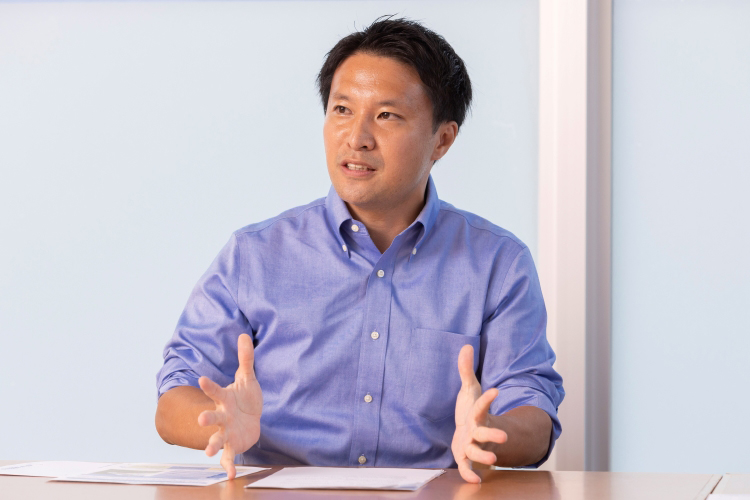
Kuroda Choshi City was selected because its coast has long, shallow waters that are well suited for a fixed-foundation wind farm, and the fact that it gets reliable, strong winds all year round. The municipal government of Choshi has also been actively enticing developers to establish a offshore wind farm off the city's coast, which conforms to the government's plan for Choshi to free itself from greenhouse gas emissions by 2050. Its "Zero Carbon City Choshi" plan was announced just last year.
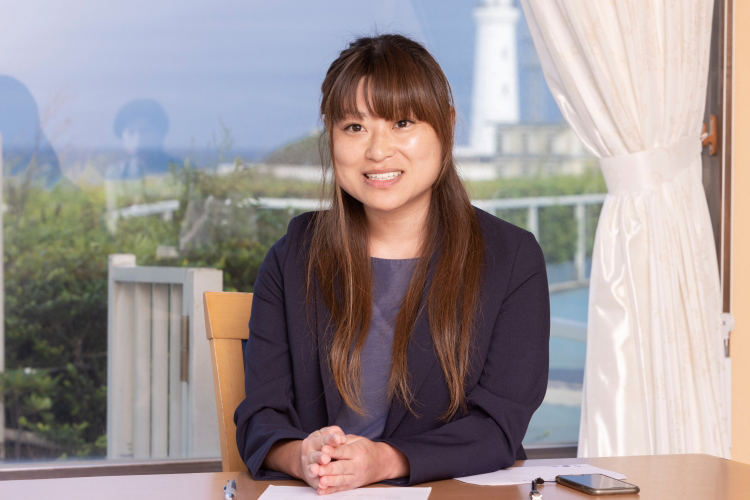
—— Size-wise, general sea-area offshore wind farms are significant projects. Tell us a bit about the project's scale.
Hanazaki Yes, they are certainly large undertakings. This offshore wind farm will span between two and ten kilometers off the Choshi City coastline at depths of 20 to 30 meters. The plan is for the 31 turbines to be fixed to the seabed over an area of roughly 4,000 hectares. Each of the turbines will extend about 250 meters above sea level and be capable of generating up to 400,000 kilowatts of electricity, which is about one fourth the capacity of a single nuclear reactor and enough to power approximately 280,000 standard households for a year. I think that can give you some idea of just how large this project will be. This offshore wind farm will be the first large-scale project in any of Japan's general sea areas, so it's also quite significant from the perspective of our country's future renewable-energy operations in general. The MC Group has been engaged in offshore wind farms in Europe for a decade now, and we're keen to leverage all of the know-how we've gained from those businesses here at home, not to mention take full advantage of the many MC Group professionals who've honed their expertise through those projects.
Unexpected Synergies Between Wind Power and Fishing
—— Shibuya-san, as a professional diver, you've been involved in the farm's pre-construction marine survey work. Tell us about that.
Shibuya I've been diving professionally for 48 years. I used to work on undersea construction projects for things like port facilities and piers, but for the last three decades I've been involved in a variety of marine surveys. My work covers sea conditions for offshore wind farms and investigations of fishing grounds and seaweed beds which act as nurseries for young fish, the intent being to find ways for new marine developments to coexist with the natural environment and fishing industry. The fishing cooperative requested that I survey the shallows and ecosystems where the farm is to be constructed off the coast of Choshi City, so since this past spring I've been investigating about 30 locations, including Kimigahama and Ahikajima.
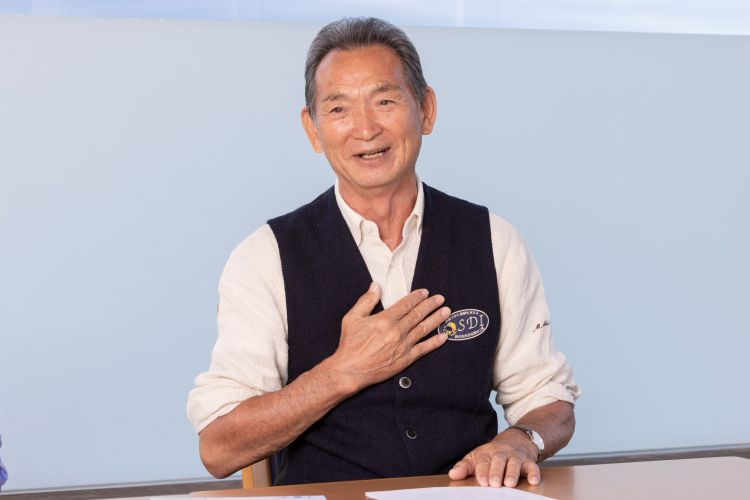
—— How are the waters in those areas?
Shibuya I was surprised at how healthy the marine environment is in Choshi. Sea desertification (the depletion of seaweeds) is a big problem in Japan nowadays, particularly in its Pacific waters. But waters near Choshi have a lot of seaweed beds. I didn't expect that, and it opened my eyes to our need to protect them. Choshi's coastal waters are rough, so the underwater visibility is poor and it can make conditions challenging for divers, but the heavy swells are also what protects the marine environment, along with the commitment shared by the local fishermen to keep natural stocks plentiful. That really gives me hope, and makes me even more determined to help keep our seas as healthy and beautiful as possible.
——Having done this kind of survey work for so many years, what are your thoughts on the coexistence of fishing industry and offshore wind farms?
Shibuya More than 30 years ago, we discovered that a lot of fish had established habitats in the underwater steel pipes connected to the Tokyo Bay Aqua line Expressway. They included species like kurodai (blackhead seabreem) and suzuki (Japanese sea bass). That made me realize that depending on how they're made, even artificial marine structures can impact ecosystems in a positive way. So ever since then, I've continued to conduct surveys and research on the relationships between these structures and their surrounding marine life. I've collected a great deal of data from waters around Japan and other countries as well, such as the UK and the Netherlands, which are both world leaders in offshore wind farms. At least in my experience, none of these developments have damaged the local ecosystems or caused the fish to disappear. In fact, there's evidence to the contrary. For example, a commercial-scale demonstration turbine was erected off Nagasaki Prefecture's Goto Islands in 2013, and in just one year's time, schools of both migratory and non-migratory seabed fish were appearing in the surrounding waters. The turbine also stimulated growth of seaweed beds, which serve as feeding grounds for small fish. It proved how effective these kinds of structures can be as artificial fish reefs. If we do things right, then future marine ecosystems should be abundant and could even grow into large fishing grounds, so it's definitely possible for offshore wind farms and fishing industries to coexist. Can growth in carbon-zero, offshore wind power really help to reinvigorate marine life? Only time will tell, but so far the signs are positive, and the promise that these businesses hold for Japan's future is enough to give us hope.
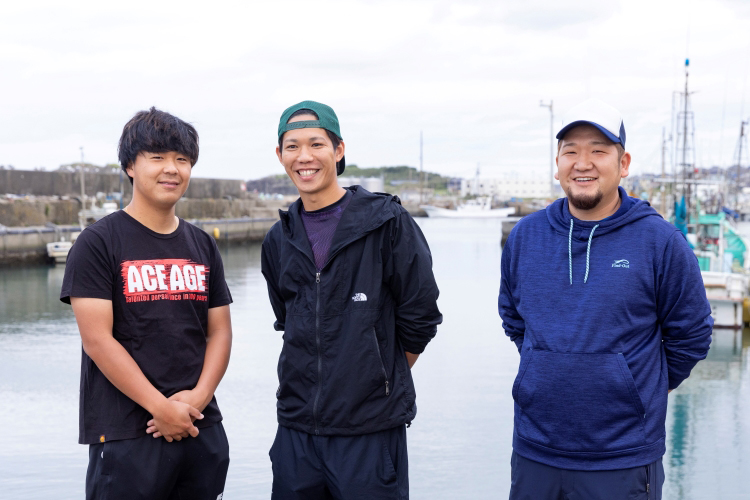
- * Volume 2 will feature the second half of our roundtable discussion.
- * The interviews conducted for the purpose of this article were carried out in accordance with pandemic-related measures. Masks were only removed for photographs.
- Offshore Wind Farm Project (1)
- Offshore Wind Farm Project (2)
- Offshore Wind Farm Project (3)
